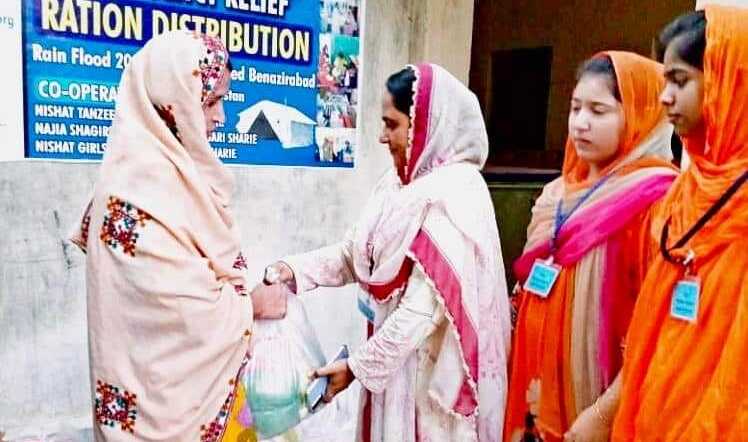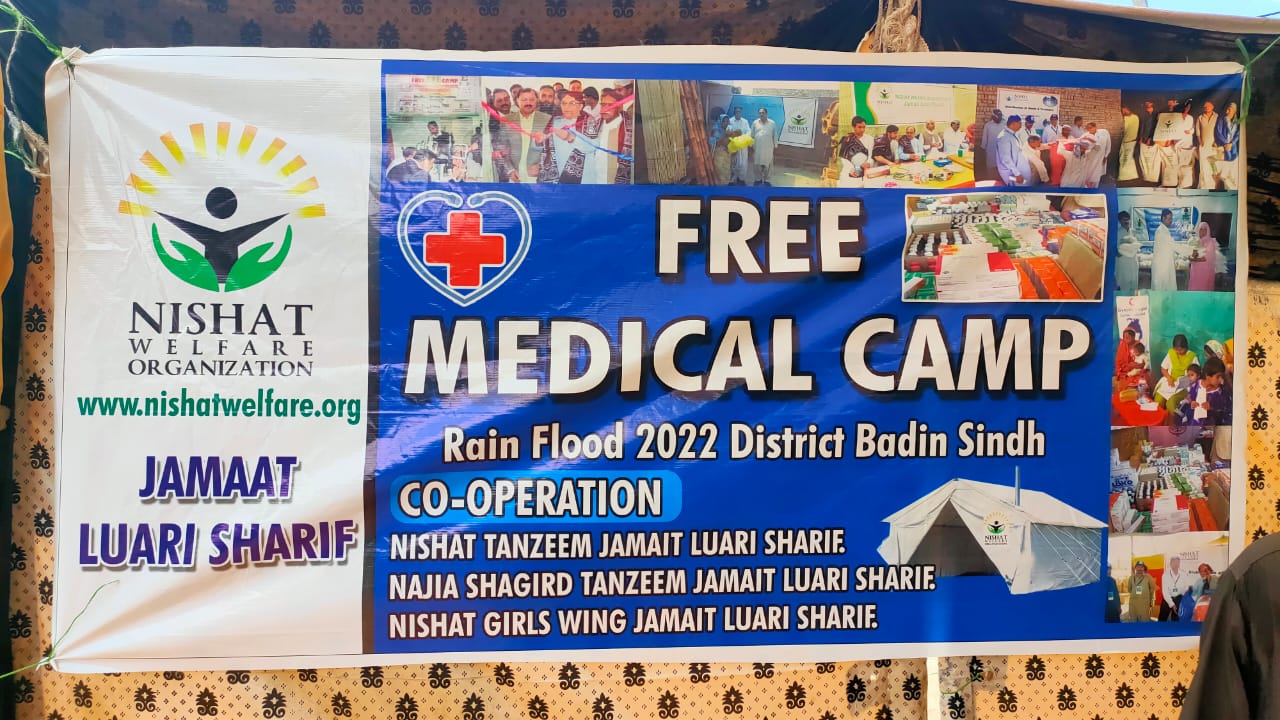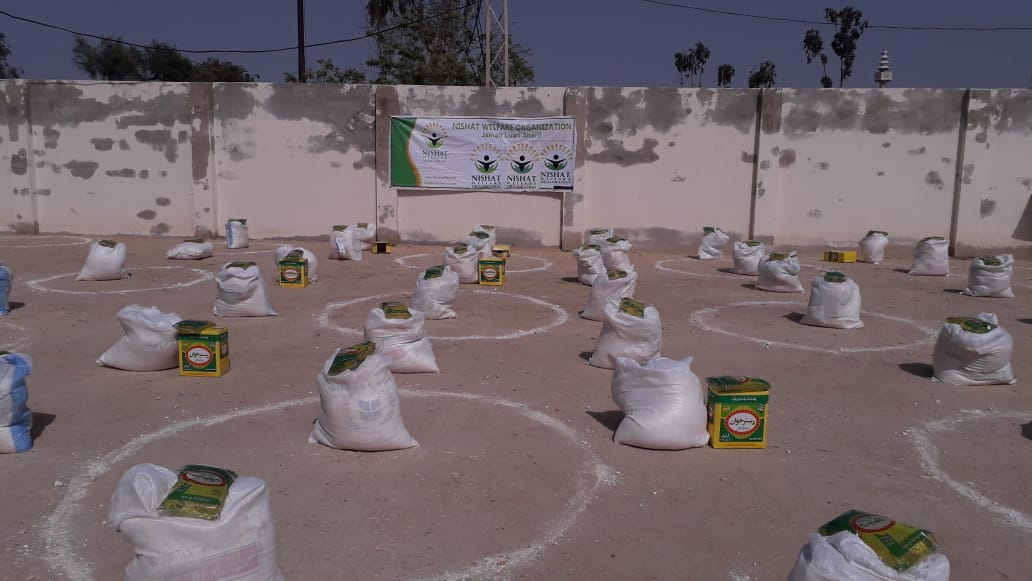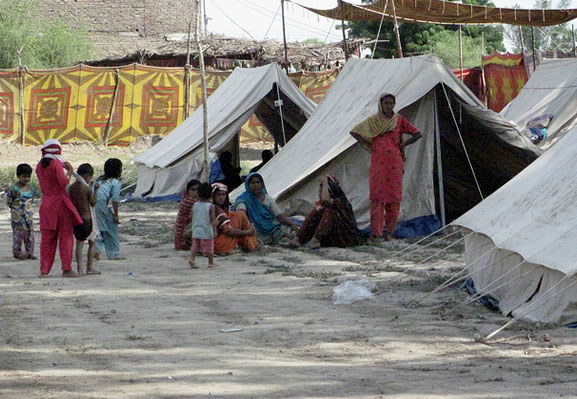Floods leave a long trail to walk
KARACHI: Floods after battering the country for over a month are finally receding and survivors have started returning to their homes, but many have no place to restart a life deeply wounded by the losses of life-time toils.
As millions of souls embark on a new journey to rebuild their homes from the ruins, relief workers believe the rehabilitation phase is much more difficult compared to saving them from inundation when the massive flood torrents headed south in the month of August.
Heavy monsoon rains started to hit Pakistan from July 22. After several days of torrential rains, rivers in Khyber Pakhtunkhwa breached their banks, flooding riverine areas. A week later, the water ravaged Punjab, but the worst yet came when the catastrophe enveloped in one package—the mighty Indus River—and hit Sindh in the first week of August.
An estimated 21 million people were affected and more than 1.9 million homes were destroyed or damaged when 62,000 square miles of Pakistan came under water. Initial estimates suggest more than 3.4 million hectares of crops and at least 200,000 pieces of livestock were also lost in the way.
"The catastrophe is much worse than these figures," said Abdul Sattar Ishaqani, the president of the Nishat Welfare Organisation (NWO), one of the many NGOs participating in flood relief activities in upper and central Sindh.
He said water still holds sway in vast areas and the flood is yet to be over. "In fact, it will take some six months for the earth to dry and all the flooded areas to get fully accessible. Only then, we would know exactly what has happened."
The NWO was among the first NGOs to engage in relief activities when the floods entered Sindh. It established five relief camps for those rescued from inundated or vulnerable areas and provided them food and shelter, besides medical facilities.
"We also took care of those who chose to stay behind in the flooded areas to secure their properties or for other reasons. We regularly went—and in some parts are still going—into the flooded areas to provide them ration supplies, said Nisar Soomro, the general secretary of the organisation.
Speaking at the NWO offices in Hyderabad, both Ishaqani and Soomro agreed that starting a new life for the flood victims after returning to their ruined homes would be very, very difficult as in many cases people had lost everything—literally.
Their views were fully endorsed by Syed Muhammad Shah, a former provincial lawmaker from the Dadu district. He fears the law and order situation might deteriorate in Sindh, when the returning people would find no place to live, no land to cultivate and all their savings washed away.
Ishaqani suggests a holistic approach and new ideas to alleviate the sufferings of these people. He says that relief camps at major conurbations had swelled beyond expectations and at places were quite unmanageable. "I would say, shift the tentages to the victims' home villages," he said, adding that it might help address the impression among the survivors of being displaced. "At least they will feel at home."
Once they are settled in temporary shelters in their native villages, they will be in a better position to stand on their feet. Till then they could be provided flood-relief cards to collect aid supplies from depots to be set up in nearby major towns or other secure locations, he added.
But other people, who took part in the relief activities, believe that the immediate task is also gigantic. "Look around, an area of the size of England is under water and the population half the size of Italy is affected. They need clean water and protection from post-flood diseases," said Shah, a former member of the Sindh Assembly. Once the water recedes, Shah went on, the first task is a vaccination drive to protect people—particularly children and the elderly—from waterborne diseases. "The United Nations has already warned against Ôa second wave of deaths' and this (warning) should be taken very seriously," he added.
Shah also pointed out that the floods have altered the ecological balance of the affected areas and its repercussion might be ignored in the short-term but would definitely be felt over the period of time. He said wildlife in the Indus catchment area was dissipated because of the water.
Citing example of his ancestral wildlife protected area known as Keti Razi Shah, he said it was a sanctuary for hog deer, hares and wild boars. But now, "we could hardly find half a dozen hog deer, which I intend to keep for a while and release them to their natural habitat once things get better. There is no sign as yet for the rest of wildlife," Shah said, adding that around 80 per cent of partridge population is also gone.
Shah said his village, Seeta, was saved from flooding, though it remained surrounded by water, mainly because of community mobilisation. "We are the followers of Dargah Luari Sharif. There is a large concentration of the followers of Luari Sharif in all the districts of Sindh, Balochistan as well as Punjab. In our difficult time they came to help us."
He also mentioned that a large number of followers from Sanghar and Badin, which remained unaffected by the floods, were busy in relief activities in Qazi Ahmad in the Nawabshah district, working at a relief camp set up by the Pir of Luari Sharif, Pir Muhammad Sadiq Qureshi.
In Qazi Ahmad, the followers of Dargah Luari Sharif also kept watch on a nearby protective embankment. Mir Maqbool Ahmad Talpur, a grower from Khadro town in the Sanghar district, told The News that many men of his town were also taking part in relief activities in Kandiaro in the Naushehroferoze district, Seeta in the Dadu district and Dokri in the Larkana district.
Talpur said the followers arrived from as far as Gandakha in the Jaffarabad district of Balochistan. However, he emphasised that their camps were not restricted to the followers of the Dargah alone. "The followers of Luari Sharif are ready to help anyone who is in need, and they are doing so."
The aid workers said that the coming weeks will see the continuation of the rescue operation as well as the start of the rehabilitation work. They emphasised that during that period arrangements must be made for vaccination of the flood victims against waterborne diseases, supply of food and clean drinking water, lending for rebuilding destroyed and damaged homes, and support for the agrarian masses to start cultivation wherever it's possible.
Ishaqani said the biggest problem would be provision of clean drinking water. The current capacity of the locally-bottled clean water supply is not enough to meet the huge demand. He proposed immediate import of sufficient quantity of water purification tablets, which could be provided to the flood victims along with their ration supplies.
He also said the NGOs have played a vital role in saving lives of the flood victims. And their efficacy cannot be ignored in the rehabilitation process.
For donations kindly visit the following link: http://www.nishatwelfare.org/joinus.php




